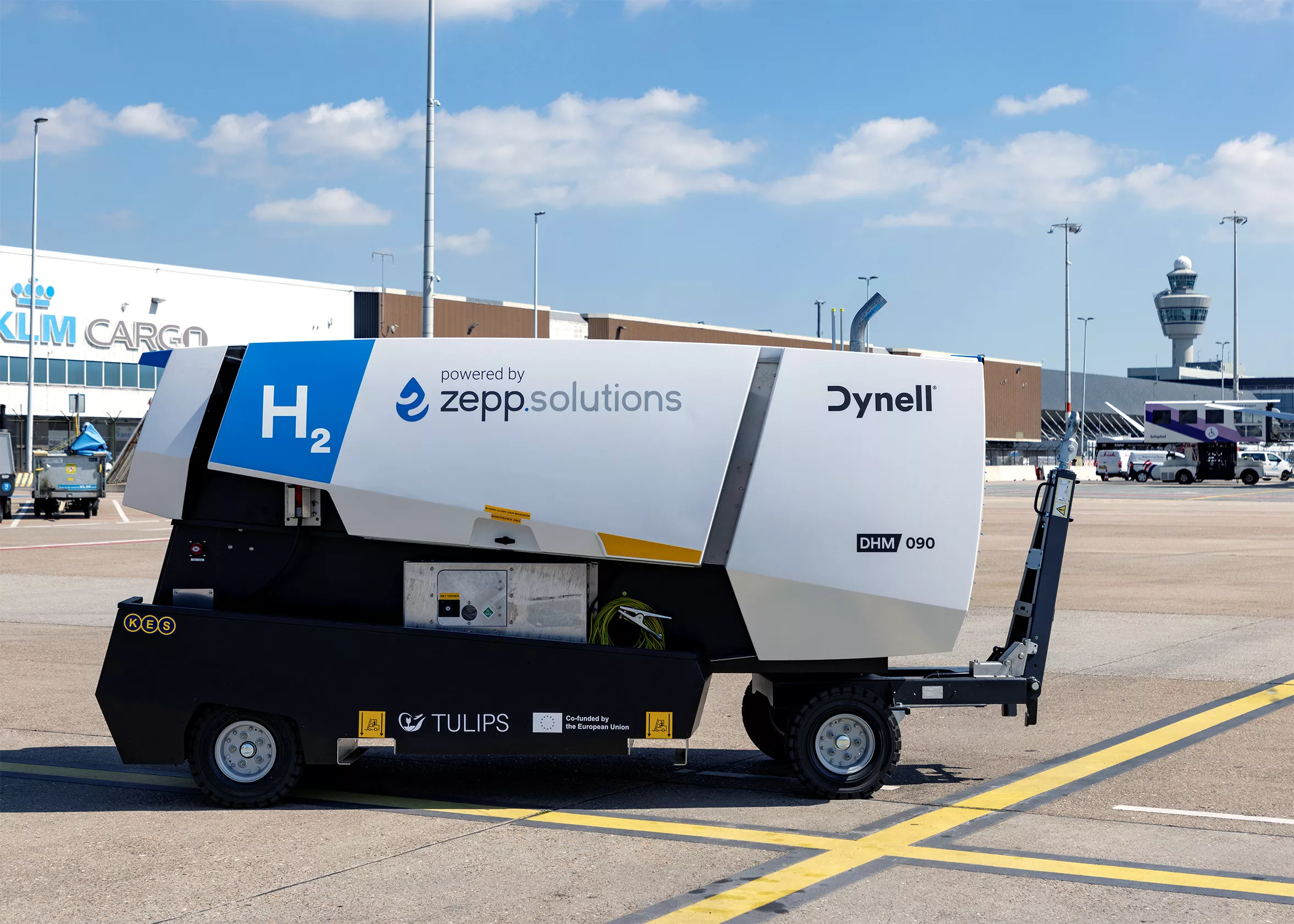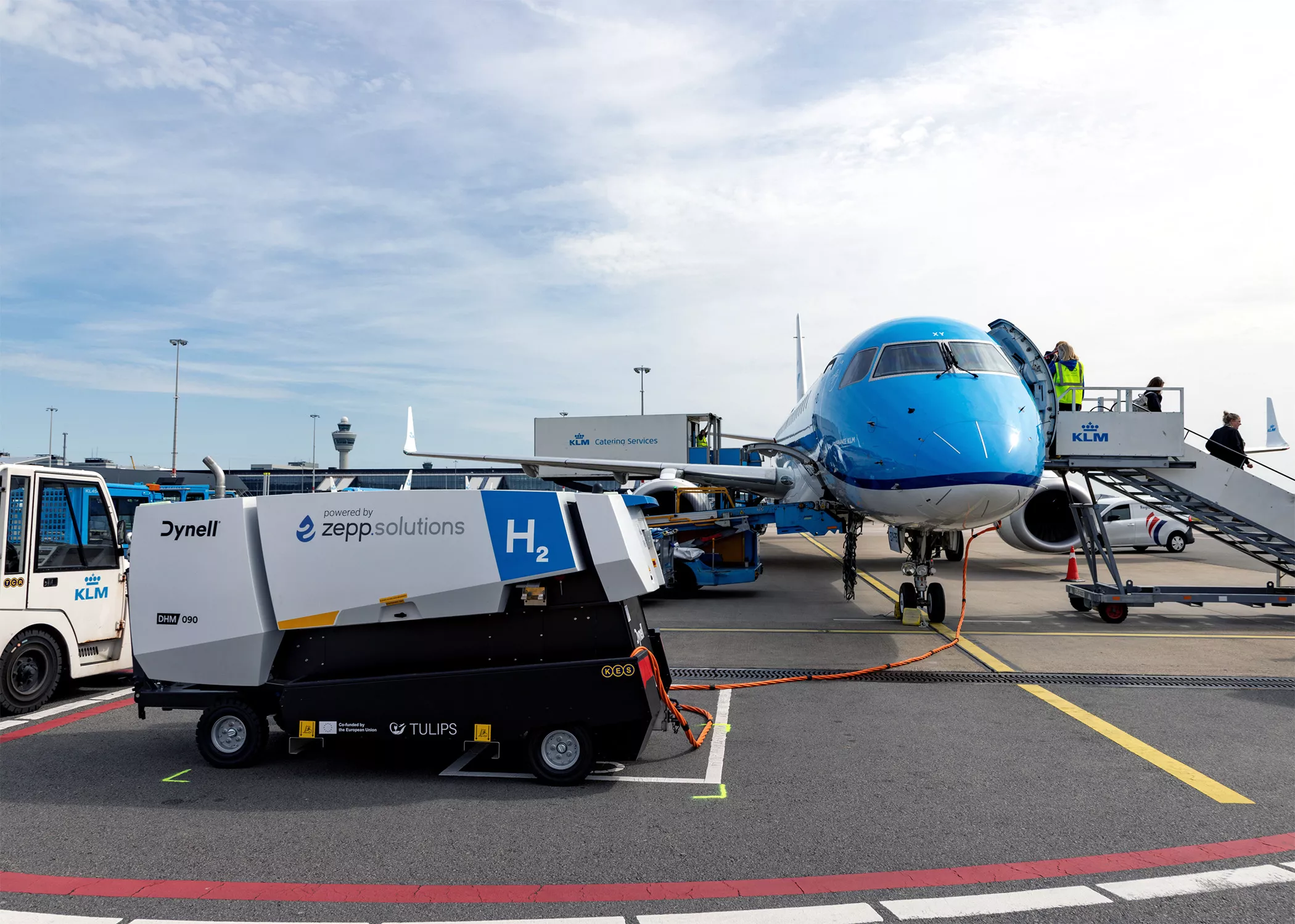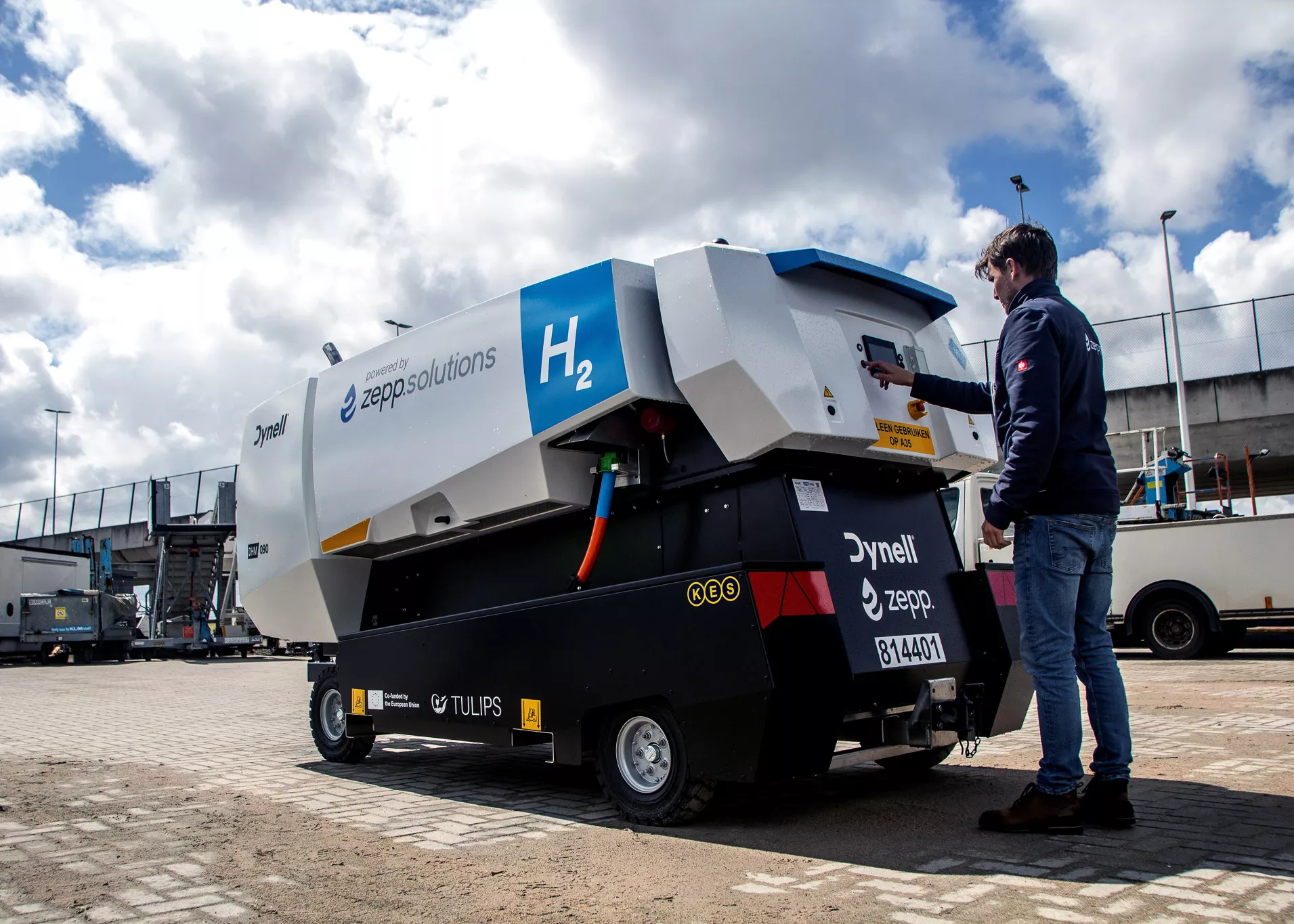
The DHM 090 integrates advanced battery design, solid-state technology, and high-efficiency fuel cells to deliver reliable 400 Hz and 28 VDC power. Hydrogen is converted into electricity through an electrochemical process, with water as the only byproduct, ensuring zero emissions.
Jasper Poortvliet, GSE Fleet Manager at KES, highlights the significance of the test: “We are very proud to be the first to use and test the H-GPU on an aircraft. I think this is a big milestone in the aviation sector as hydrogen-powered equipment has the potential to fill the gap left by battery-powered equipment. The first test shows that we can successfully provide ground power to an aircraft without significantly impacting airport operations.”
The tests, conducted as part of the European Union’s TULIPS program, are a crucial step in evaluating the unit’s performance and endurance under real-world conditions. The unit will undergo further testing at various airports, including Torino and Larnaca, in the coming months to gather valuable data.
Michael Brandstötter, Head of Sales and Marketing at Dynell, emphasizes the benefits of the H-GPU: “With the DHM 090, we offer an emission-free, highly efficient solution that can be quickly and easily refueled even at remote stands. The high energy storage capacity of the H-GPU allows for 7-9 turnarounds a day over 2-3 days before refueling is required.”


In addition to endurance tests, the unit will also be subjected to extreme climate testing to assess the H-GPU’s performance in hot and cold temperatures. Dynell and its partners are committed to creating a groundbreaking solution for the future of ground power supply through these comprehensive tests.
With the DHM 090, we are leading the transformation of airport operations towards a zero-emission future, actively contributing to a more sustainable aviation industry.